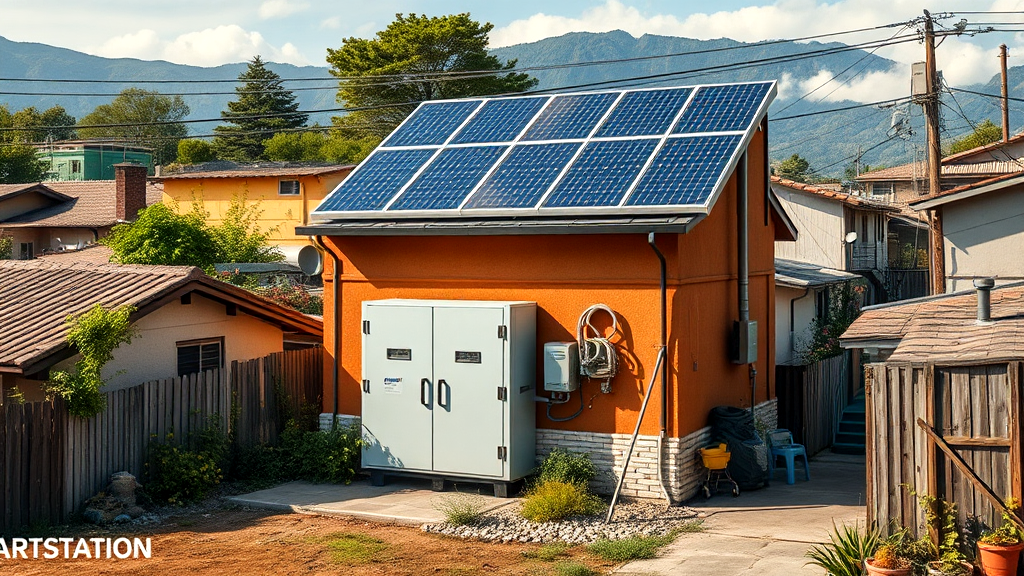Overview of California Solar Incentives
Diving into the realm of California solar incentives, residents can tap into numerous benefits that slash solar installation costs. The federal solar tax credit offers a 30% tax credit until 2032. Programs like SGIP provide rebates for battery installs, promoting solar energy independence. Meanwhile, the PACE program lets you finance solar via property taxes. California’s property tax exclusion ensures solar installations don’t spike your tax bill. With these solar incentives, Californians can maximize savings while contributing to solar renewable energy efforts. Who wouldn’t want a lighter electricity bill and a greener planet?
Federal Solar Tax Credit Explained
Explaining the federal solar tax credit reveals its significance in reducing solar costs. This federal incentive covers 30% of installation expenses, and it’s set to taper after 2032. Included costs are solar panels, labor, and storage devices over 3 kWh. While California solar incentives enhance affordability, the federal tax credit remains a critical component. With these savings, California homeowners can enjoy significant financial benefits. Investing in solar energy not just lightens your electricity bill but also contributes to a greener planet.

Eligibility for Federal Solar Tax Credit
Determining whether you qualify for the federal solar tax credit involves several key factors. Firstly, the installation must be completed between January 2006 and December 2032. Secondly, the solar system must be installed on your primary or secondary residence within the United States. You’ll want to ensure that your solar energy expenses, including solar panels and labor, are eligible for the credit. For additional resources, San Diego County’s green building guide offers helpful insights into California solar incentives: San Diego Green Buildings. Lastly, remember that the credit is non-refundable.
Expenses Covered by Federal Tax Credit
What costs are eligible under the federal tax credit? The federal solar tax credit covers 30% of the expenses for home solar installations, including solar panels, labor, and necessary equipment like storage devices over 3 kWh. This benefit remains available until 2032, gradually reducing afterward. Tapping into this credit not just eases financial burdens but also aligns with California solar incentives. Investing in solar energy not just lightens your electricity bill but also contributes to a greener planet. Always check current eligibility details to maximize benefits.
California State Solar Tax Credit Details
California’s solar incentives lack a dedicated state tax credit, yet several state-specific programs still offer substantial support. Programs like SGIP provide rebates for energy storage, aiding residents in maximizing solar energy benefits. The DAC-SASH program targets low-income households, enhancing accessibility to solar systems. Though a specific California solar tax credit is missing, these initiatives help bridge the gap. Homeowners can combine federal tax credits with these state programs to optimize savings. California solar panel installations remain financially viable and environmentally beneficial.
Self-Generation Incentive Program Basics
The fundamentals of SGIP encourage energy storage through rebates linked to storage capacity. This initiative prioritizes low-income and vulnerable groups by offering higher incentives, ensuring affordable access to solar energy. Residents in wildfire-prone areas also receive increased support, which bolsters energy resilience. By incentivizing such installations, SGIP not just aids in reducing energy costs but also enhances independence from the grid. This complements other solar incentives, like the federal solar tax, making solar panel installations more financially accessible.
SGIP for Residential Storage
Residential storage through SGIP delivers sweet savings in California. This program offers rebates, boosting energy independence and cutting costs. Rebates for battery installations make solar systems more appealing, especially when paired with the federal solar tax credit. Imagine the relief when your energy bill drops! Keep in mind, batteries not just store energy; they provide peace of mind during outages. If you’ve got solar panels, adding storage might be a smart move. Solar energy becomes more reliable and cost-effective with these incentives.
SGIP for Disadvantaged Communities
In the context of SGIP supporting disadvantaged communities, the program is a game changer. It provides targeted rebates for energy storage systems, making solar energy accessible to more people. Residents in these areas can experience reduced energy costs and enhanced independence. Plus, combining this with the federal solar tax credit further sweetens the deal for homeowners. The initiative is a beacon of hope, ensuring everyone has the chance to benefit from renewable energy advancements and the financial perks they bring.

Property Tax Exclusion for Solar Installations
Thinking about how solar installations might affect property taxes can seem daunting, but California’s approach is a breeze. Installing solar panels doesn’t hike up your property tax bill—a neat incentive indeed. This exclusion for solar systems is like a green light for home solar investments, valid through January 1, 2025. Besides, combining this with the federal tax credit makes the deal even sweeter. With solar incentives in place, your solar renewable energy journey in California is financially attractive and environmentally friendly.
Understanding Net Metering in California
Exploring how net metering works in California, you’ll find it offers solar system owners a chance to sell surplus energy back to the grid. With changes in the new NEM 3.0, buyback rates have decreased, nudging some folks towards adding batteries. This shift could make a difference if you’re weighing the benefits of a solar tax credit against potential savings. Adding panels might still be a good move. With a federal tax credit in play, home solar setups remain attractive.
Differences Between NEM 2.0 and NEM 3.0
Comparing NEM 2.0 to NEM 3.0 reveals notable shifts for California’s solar panel enthusiasts. The biggest change? Lower buyback rates for excess energy. This makes adding storage a tempting option. Thinking about the solar tax credit? It’s still a gem, keeping solar systems appealing despite the adjustments. What’s more, the federal tax credit remains a sweet deal, lightening the financial load. So, while the rules have changed, home solar still offers significant benefits in the golden state.
Local California Solar Incentives and Rebates
Local opportunities for solar rebates and credits in California cater to diverse needs. Explore programs like SGIP, offering rebates for battery installations, and PACE financing, which incorporates installation costs into property tax bills. Home solar systems benefit from tax exclusions, preventing property tax hikes. These incentives, paired with the federal tax credit, make solar ventures appealing. Even California solar panel enthusiasts can find reduced costs and enhanced savings, ensuring a brighter, greener future. Investing in solar renewable energy brings both economic and environmental rewards.

How to Find Local Solar Rebates
Finding local rebates for solar installations can feel like a treasure hunt. Start by checking with your city’s utility provider for any specific programs or discounts. Exploring the California Public Utilities Commission website might reveal golden opportunities, such as the CARE and FERA programs here. Remember, each municipality may offer unique incentives, so keep your eyes peeled. Combining these with the federal tax credit can turn your home solar adventure into a rewarding experience.
Property Assessed Clean Energy (PACE) Program
Integrating solar costs into property taxes can be a game-changer for Californians. It offers a practical, long-term solution for those eyeing home solar systems. With installation costs bundled into property tax bills, the financial burden can ease over time.
This flexibility, however, comes with a catch. Watch out for potentially increased annual assessments. Still, the advantages often outweigh the concerns, especially when paired with other California solar panel perks. Keep in mind, while you’re saving the planet, you might just save some pennies too!
Solar Energy System Property Tax Exclusion
California’s property tax exclusion for solar setups ensures your home’s value won’t climb just because you’ve added solar panels. This makes solar investments more appealing for homeowners looking to opt for renewable energy without hiking property taxes. Many locals, thrilled with the solar tax credit and other California solar panel incentives, find this approach especially rewarding. For more insights on how solar policies affect homeowners, consider insights shared by Grid Alternatives on their efforts with the DAC-SASH program here.
How to Apply for Solar Incentives
Applying for solar perks can make a big difference in your wallet. Start by exploring available California options like rebates for solar panels and the Self-Generation Incentive Program (SGIP). They offer financial help for both solar panels and battery storage. Don’t miss out on checking state tax benefits, such as the Property Assessed Clean Energy (PACE) program, making financing easier through property taxes. Combining these with federal incentives can maximize savings, giving your home solar system a real boost in affordability and efficiency.
Estimated Solar Savings in California
The potential savings from solar setups in California are nothing short of impressive. Homeowners can often offset initial investments in about 4-6 years. Leveraging the solar tax credit slashes installation costs significantly. By integrating a solar system, you tap into solar renewable energy, enjoying long-term benefits. Check the IRS guide for federal details. Remember, state-specific perks like rebates and net metering enhance savings further. Solar panels, besides saving money, contribute to a greener planet. Embrace the sunshine and keep your bills in check!

Comparing Solar Costs vs. Grid Electricity
When you weigh the costs of solar setups against grid electricity, California’s solar incentives make a compelling case. These incentives, including federal perks and the SGIP, lower initial costs and increase energy savings. With the state tax credit options and local rebates, the financial burden lightens considerably. Installing a home solar system not just reduces electricity bills but also enhances property value without raising taxes, thanks to California’s property tax exclusion. Go solar, embrace the savings, and enjoy the sunshine!
Are Solar Panels Worth It in California?
Considering if solar installations are a wise choice in California? The state’s numerous programs sweeten the deal. Federal incentives provide substantial tax relief, while local rebates and the Self-Generation Incentive Program offer additional savings. Net metering allows you to sell excess energy back to the grid. Although California lacks a specific state credit, the benefits stack up in your favor. Homeowners often see returns in 4-6 years, making solar panels a financially viable and environmentally friendly option for many.
Pros and Cons of Going Solar
Thinking about the benefits and drawbacks of solar power can feel like a rollercoaster ride. Let’s chat about the sunny side first. California’s perks, like the PACE program, make solar panels more affordable by letting you pay through property taxes. On the flip side, costs can vary, and finding the right “home solar” setup might feel like picking a needle from a haystack. But, with savings on the horizon, the journey seems worthwhile. Balancing these factors can help you decide if a solar system is your best bet.
Top Solar Installation Companies in California
When seeking the best solar installation firms in California, various options stand out due to their expertise and customer service. They help residents take full advantage of California incentives. Here’s a list:
-
Sunrun: Known for flexible financing.
-
SolarCity: Offers comprehensive solar solutions.
-
SunPower: Provides high-efficiency panels.
-
Vivint Solar: Integrates smart home technology.
-
Tesla Energy: Offers sleek solar designs.
-
PetersenDean: Combines solar with roofing solutions.
-
Verengo Solar: Focuses on affordability.
These companies assist in making home solar more accessible and effective.
How Many Californians Claim Solar Incentives
Curious about the number of Californians benefiting from solar incentives? Many residents have embraced these opportunities to offset the costs of their solar systems. With programs like the Self-Generation Incentive Program and federal credits, homeowners are diving into solar panel installations. The absence of a state tax credit hasn’t deterred the momentum. Instead, the focus remains on maximizing savings through local initiatives. This enthusiasm is seen in communities leveraging the Property Assessed Clean Energy program, making solar more accessible. For those interested in specific forms, this link offers insights into related processes.
How to Choose the Right Solar System
Choosing the perfect solar setup involves understanding your energy needs and budget. Consider how California’s programs can lighten your financial load. The federal incentive covers a chunk of costs, and local rebates make solar panels even more enticing. Don’t forget about the state tax credit alternatives that sweeten the deal. Home solar choices also depend on roof space and sun exposure. Checking your utility bills can guide you in sizing your system. In short, aligning incentives and personal needs ensures a win-win solar solution.

Impact of Solar Panels on Property Value
The influence of solar panels on a home’s price tag can be substantial. Installing them often leads to increased property value, especially in sun-soaked places like California. Many buyers appreciate the long-term savings on energy bills. Homeowners can benefit from programs like PACE despite the absence of a state tax credit. These initiatives make solar panels more financially viable. With the right setup, your home could become the apple of potential buyers’ eyes. Solar panels are a shining investment.
Solar Renewable Energy Certificates (SRECs)
Navigating the intricacies of Solar Renewable Energy Certificates (SRECs) can greatly benefit those involved in solar investments. Home solar systems in California are eligible for these certificates, allowing homeowners to earn additional income by selling SRECs in the market. This can significantly offset the costs associated with solar panels, making them even more appealing. While there isn’t a state-specific tax credit, leveraging SRECs alongside available programs ensures homeowners make the most of their investments, ultimately enhancing both their financial and environmental footprint.
How to Qualify for Free Solar Programs
Qualifying for free solar programs in California involves several steps. Begin by exploring local solar initiatives tailored for specific regions and utility providers. Many areas offer rebates or no-cost installation options. Review income and property criteria to ensure eligibility for these programs. Some initiatives target low-income households or those in wildfire zones. A strategic approach includes combining federal and local incentives. This maximizes benefits and minimizes out-of-pocket expenses for home solar installations. Connecting with solar providers can provide further guidance tailored to individual needs.

Choosing the Best Solar Panel Company
Deciding on the ideal company for solar panels in California involves careful consideration of several factors. California solar incentives can make a huge difference, so it’s crucial to select a company familiar with these programs. Look for those offering assistance with the PACE program, as this can simplify financing. Transparency in pricing and customer reviews also paint a clear picture. For those considering PACE, the DFPI offers resources on program administrators. Always prioritize companies offering comprehensive warranties and strong customer support.
Federal ITC Impact on Solar Costs
The federal ITC’s role in reducing solar costs is groundbreaking. It slashes installation expenses by 30%, making solar panels more alluring. This program is pivotal for Californians, complementing various state programs. Residents can pair it with other local benefits for maximum savings. Even without a state tax credit, Californians can still capitalize on numerous programs that dovetail with federal efforts. The combination of these incentives provides a financial cushion, easing the transition to solar energy and boosting homeowner satisfaction.
California’s Solar Bill of Rights Overview
California’s Solar Bill of Rights shines a spotlight on empowering residents. It ensures they have unobstructed access to solar panels without interference. Property owners gain the freedom to install panels, boosting energy independence. This initiative bolsters existing financial programs, like the Self-Generation Incentive Program, facilitating affordable solar access. Homeowners can capitalize on numerous benefits, even with the absence of a state tax credit. It’s a win-win, making the solar journey smoother and more rewarding, leaving no stone unturned for energy enthusiasts.
Future of Solar Incentives in California
The horizon for California’s solar benefits is ever-evolving. Federal tax credits continue to shine bright, offering 30% reductions. However, changes are afoot with the NEM 3.0, nudging homeowners toward storage solutions. On the local front, programs like SGIP and DAC-SASH aim to keep solar accessible and affordable. Property tax exclusions sweeten the deal, ensuring no hikes post-installation. As policies shift, staying informed is key. Adapting to these changes can maximize savings and maintain the golden glow of solar investments.

Recent Solar Policy Developments
In recent policy shifts, California’s solar initiatives continue to evolve. Recent rules have reshaped net metering, offering reduced rates for energy fed back into the grid. This change nudges folks to consider battery storage. Newer incentives aim to strengthen the financial appeal of solar installations. With programs like SGIP in play, residents can still tap into rebates and support for energy independence. Engaging with these incentives can be a game-changer for many, ensuring solar installations remain a sound investment.
Benefits of Solar Energy Adoption
Exploring the perks of adopting solar energy reveals various advantages, especially with California’s solar incentives. These programs significantly cut costs, making solar installations more accessible. The federal Investment Tax Credit, offering a substantial 30% reduction, pairs well with state initiatives like the SGIP for energy storage. Additionally, financing through property taxes under the PACE program eases the financial burden. Californians can capitalize on these incentives to enjoy savings and environmental benefits while boosting energy independence. With so many incentives, it’s a tempting deal!
Solar and Battery Incentives in California
Diving into solar perks in California, residents can tap into numerous benefits. The federal Investment Tax Credit offers a juicy 30% savings until 2032. Pair this with California’s Self-Generation Incentive Program for battery rebates. Financing through the Property Assessed Clean Energy program eases costs via property taxes. These incentives make solar investment tempting and less burdensome. Imagine cutting your energy bills while basking in the sun! California’s approach ensures solar adoption remains attractive and feasible for many households.
California Proposals for Low-Income Rebates
Exploring California’s proposals for rebates aimed at low-income households highlights an exciting development. These initiatives focus on enhancing equitable access to solar benefits. By providing substantial financial support, they ensure that solar installations become a viable option for economically disadvantaged individuals. This effort aligns with broader state goals, complementing existing programs like SGIP. Such measures not just reduce energy costs but also contribute to long-term environmental sustainability. Californians from all walks of life can now look forward to greener, more cost-effective energy solutions, thanks to these forward-thinking policies.

Solar Tax Credits and Renewable Energy
Exploring how tax credits and renewable energy incentives intertwine reveals exciting opportunities. California residents can tap into substantial financial benefits, including the federal Investment Tax Credit, providing a 30% deduction. With the Self-Generation Incentive Program, rebates for battery installations further sweeten the deal. Financing options like the PACE program offer a flexible approach, integrating costs into property taxes. These programs make solar systems more accessible and affordable, allowing Californians to enjoy long-term savings and energy independence. The sunshine state truly knows how to brighten up your finances!
How Solar Incentives Affect Tax Credits
Examining how solar incentives impact tax credits unveils intriguing financial benefits for Californians. These incentives, including the federal Investment Tax Credit, significantly reduce initial costs. While California doesn’t offer a direct state credit, programs like SGIP and PACE provide ample support. These initiatives make solar more affordable, encouraging installation and energy independence. It’s like finding a pot of gold in your backyard, letting the sunshine power your home without breaking the bank. California’s approach ensures solar is an appealing investment for many.
Conclusion
Switching to solar energy in California is a bright decision. With federal and state incentives, the financial benefits are significant. Federal tax credits and programs like SGIP make solar installations more affordable. Consider the long-term savings against initial costs. Most see a return in just a few years.
Local incentives and net metering add more fuel to the fire. With options like the PACE program, financing becomes less daunting. Keep an eye on policy updates as they can impact decisions. The investment is not just in energy but in a cleaner future. California’s sunshine is an asset, and using it wisely pays off. Solar panels are an investment in both your home and the environment.
FAQ
-
What is the Federal Solar Tax Credit and how does it benefit me?
The Federal Solar Tax Credit, or ITC, cuts installation costs by 30%. This credit lowers your tax bill directly, which is a nice perk. It’s effective until 2032, so there’s plenty of time to benefit.
-
Can I get rebates for installing solar batteries in my home?
Yes, through the Self-Generation Incentive Program (SGIP). This program offers rebates for battery systems, which boost energy independence. Incentives are higher for those in wildfire-prone areas or with medical needs.
-
How does the Property Tax Exclusion benefit solar panel owners?
Installing solar panels won’t bump up your property taxes, thanks to California’s Property Tax Exclusion. This applies to systems installed before January 1, 2025. It makes solar investments more attractive financially.
-
What is the impact of Net Metering 3.0 on my solar savings?
Net Metering 3.0 allows you to sell back extra energy to the grid, but at lower rates now. Many consider adding battery storage to maximize savings due to these reduced rates.
-
Are there local incentives for going solar in California?
Yes, local incentives change by area and utility provider. They can include rebates or even no-cost installation options for eligible residents. It’s worth checking with your local utility company.


 Facebook
Facebook
 X
X
 Pinterest
Pinterest
 Copy Link
Copy Link




